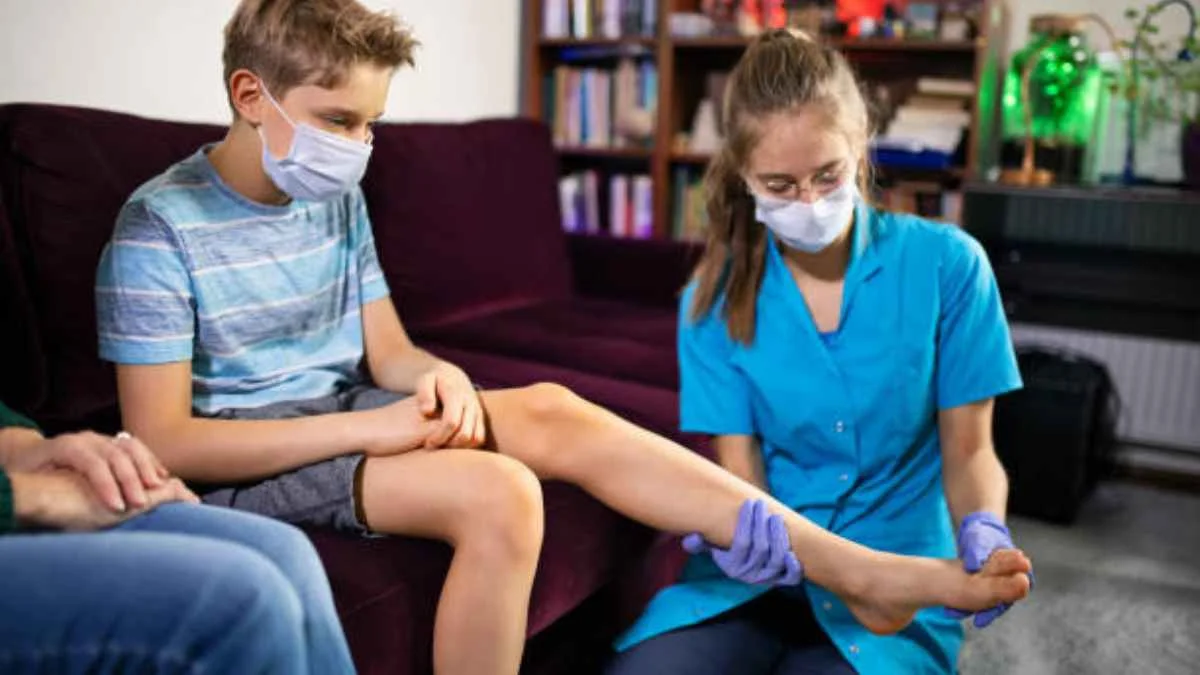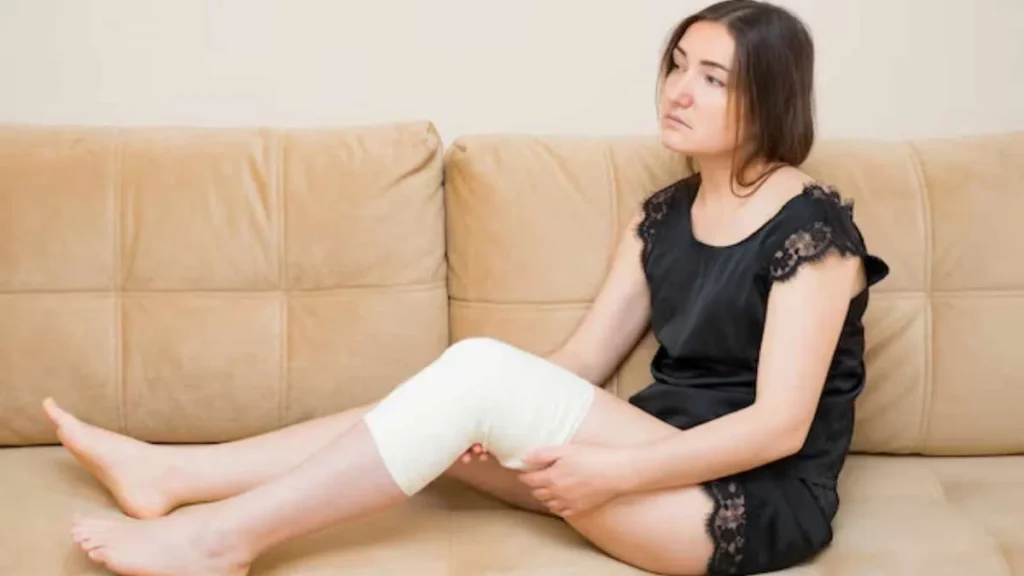HEALTH AND FITNESS
Legs That Last: How to Prevent Common Leg Ailments

Our legs are some of the hardest-working parts of our bodies. Whether we’re walking, running, standing, or sitting, they bear the brunt of our daily activities. But despite their strength and resilience, legs are also prone to a range of common ailments, from muscle cramps to varicose veins. The good news is that many of these conditions can be prevented or managed with simple lifestyle changes and care routines. Let’s explore how you can keep your legs in top shape for years to come.
Table of Contents
1. Stay Active, But Don’t Overdo It
Physical activity is one of the most important ways to maintain leg health. Regular exercise improves circulation, strengthens muscles, and helps keep bones strong. However, it’s essential to strike a balance. Overexerting yourself through intense exercise or repetitive activities like running can lead to strain and injury.
Tip:
Incorporate a mix of low-impact exercises such as swimming, cycling, and walking into your routine. These activities promote cardiovascular health without putting undue stress on your joints.
2. Stretch and Warm Up Properly
Before diving into physical activity, warming up and stretching your muscles are crucial steps in preventing injuries like strains, sprains, and cramps. Stretching increases flexibility, allowing muscles to move more freely and reducing the risk of injury.
Tip:
Spend at least 5 to 10 minutes doing dynamic stretches (such as leg swings or walking lunges) before exercise, and static stretches (holding positions for 20–30 seconds) afterward to keep your muscles elongated and relaxed.
3. Maintain a Healthy Weight
Excess weight places additional strain on the muscles, joints, and veins in your legs. Carrying extra pounds can increase your risk of developing problems like varicose veins, arthritis, and joint pain, as the added pressure accelerates wear and tear.
Tip:
A balanced diet combined with regular physical activity is key to managing your weight. Focus on eating nutrient-dense foods, such as fruits, vegetables, lean proteins, and whole grains, while limiting processed foods, sugar, and unhealthy fats.
4. Practice Good Posture
While standing or sitting for long periods, improper posture can lead to poor circulation and muscle fatigue, especially in the legs. When you slouch or lean to one side, your muscles have to work harder to maintain balance, which can cause aches and pains over time.
Tip:
Whether standing or sitting, be mindful of your posture. When standing, distribute your weight evenly across both legs. When sitting, avoid crossing your legs, as this can restrict blood flow and lead to swelling. Ensure your workstation is ergonomically friendly to minimize strain.

5. Wear the Right Shoes
The shoes you wear have a significant impact on the health of your legs and feet. Ill-fitting shoes or those with inadequate support can lead to a variety of leg problems, from blisters to joint pain and conditions like plantar fasciitis.
Tip:
Choose shoes that offer proper arch support and cushioning. If you’re on your feet for long hours, consider orthotic insoles to provide extra comfort and alignment. Avoid wearing high heels for prolonged periods, as they can cause muscle imbalances and increase the risk of strain on your legs.
6. Avoid Prolonged Sitting or Standing
Long periods of sitting or standing can disrupt the circulation in your legs and cause a variety of issues, from swelling to deep vein thrombosis (DVT), a condition where blood clots form in the deep veins. If your job or lifestyle requires long hours of either activity, it’s important to take breaks and move around.
Tip:
Try to get up and walk around every 30 minutes if you’re sitting for extended periods. If you’re standing, shift your weight from one leg to the other, or use a footrest to reduce pressure. Consider using a standing desk or walking while taking phone calls to keep your legs engaged throughout the day.
7. Manage Stress and Practice Relaxation Techniques
Stress not only affects your mental well-being but also impacts your physical health, contributing to muscle tension and discomfort in your legs. Chronic stress can lead to poor posture and reduced circulation, both of which contribute to leg ailments.
Tip:
Incorporate stress-reducing activities such as yoga, deep breathing, meditation, or even simple stretching into your routine. These practices can help release tension in your body and improve overall circulation, keeping your legs feeling strong and healthy.
8. Protect Your Skin and Veins
Conditions like varicose veins and spider veins are often a result of poor circulation, which can be worsened by standing or sitting for extended periods. In addition, poor circulation can also lead to conditions like leg ulcers or blood clots.
Tip:
Make it a habit to elevate your legs regularly to boost blood circulation, especially if you spend extended periods sitting or standing. Wearing compression socks can help minimize the appearance of varicose veins and support improved blood flow. Also, steer clear of tight clothing around the thighs, as it can hinder circulation. If you’re concerned about your veins, consider consulting a vein specialist near you for personalized advice and treatment options.
9. Stay Hydrated
Dehydration is a common cause of muscle cramps, especially in the legs. When you’re dehydrated, your muscles are more likely to contract involuntarily, leading to painful cramps.
Tip:
Drink plenty of water throughout the day, particularly before, during, and after exercise. Staying hydrated helps prevent muscle fatigue and cramping, keeping your legs comfortable and functional.
10. See a Healthcare Professional for Persistent Issues
If you’re experiencing chronic pain, swelling, or other leg-related symptoms, don’t hesitate to consult a healthcare professional. Conditions like arthritis, deep vein thrombosis, and peripheral artery disease require medical attention and early intervention.
Tip:
Regular check-ups with your doctor can help detect underlying issues before they become more serious. A healthcare provider can guide you on how to manage specific leg problems and improve your overall leg health.
In Conclusion
Taking care of your legs is essential for long-term mobility and comfort. By incorporating simple habits like staying active, stretching, maintaining a healthy weight, and practicing good posture, you can prevent many common leg ailments. With these preventive measures, you’ll enjoy stronger, more resilient legs that will carry you through life’s activities for years to come.
-

 GENERAL6 months ago
GENERAL6 months agoChristofle – For Those Who Dream of Family Heirloom Silver
-

 SPORTS8 months ago
SPORTS8 months agoDiscover the World of Football with Streameast: Watch Your Favorite Leagues and Tournaments
-

 GENERAL5 months ago
GENERAL5 months agoUncovering the World of кинокрадко: The Dark Side of Film Piracy
-

 GENERAL2 months ago
GENERAL2 months agoATFBooru: Anime, Gaming, and Subculture Imageboard


























